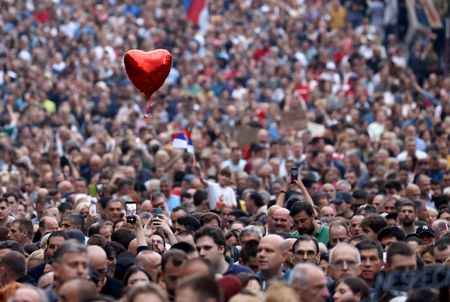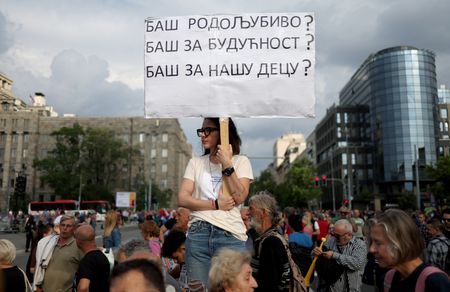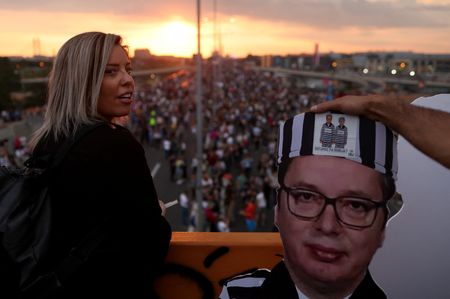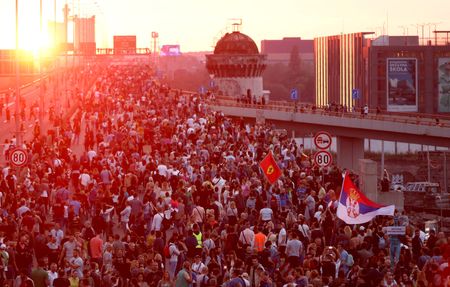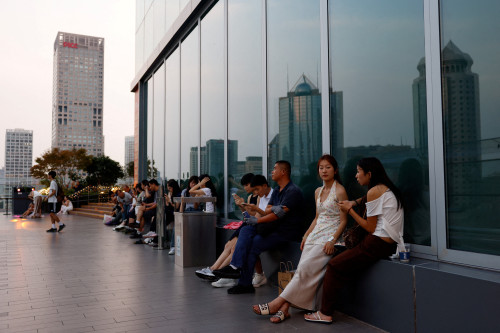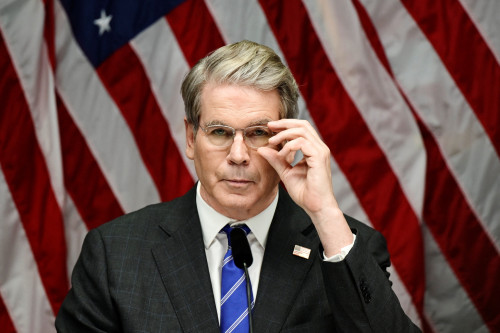By Ivana Sekularac and Branko Filipovic
BELGRADE (Reuters) – Serbians paraded life-size figures of leading government figures in prison jumpsuits on Saturday during a seventh week of protests since two mass shootings triggered nationwide protests.
In the capital Belgrade, tens of thousands of demonstrators blocked a major highway and demanded that government heads roll for permitting a culture of violence they said was to blame for the killings of 18 people on May 3 and May 4.
In the first such coordinated events of the protest campaign, marchers also blocked streets in Novi Sad in the north, Nis in the south and Kragujevac in central Serbia.
“Vucic out!” chanted the crowd in Belgrade, referring to Serbian President Aleksandar Vucic, as his likeness was paraded alongside that of Prime Minister Ana Brnabic and other prominent figures in black-and-white jail garb.
The protesters also demanded the resignation of Serbia’s interior minister Bratislav Gasic and secret service chief Aleksandar Vulin whom they blame for failing to stop gangs.
Accusing media of promoting violence, they also want the withdrawal of broadcast licences for television channels Pink TV and Happy TV and a ban on some tabloids.
“Time works in our favour and however long it takes we’ll persevere and in the end accomplish our goals,” said one protester, economist Vladimir Savic. “They (the government) sow poison and fear throughout Serbia.”
Vucic, whose party has been in power since 2012, had said he would agree to test his popularity in snap polls this year but the opposition says protests demands should be met first and the media given greater freedom.
Brnabic said last week she was willing to resign and invited opposition parties, who have backed the protests, for dialogue. But protest leaders have said they will not speak with the government until their demands are met.
Serbia has a deeply entrenched gun culture, and along with the rest of the Western Balkans is awash with military-grade weapons and ordnance in private hands after the wars of the 1990s that tore apart the former Yugoslavia.
However, mass shootings were rare until last month.
(Reporting by Ivana Sekularac; Editing by Andrew Cawthorne)


